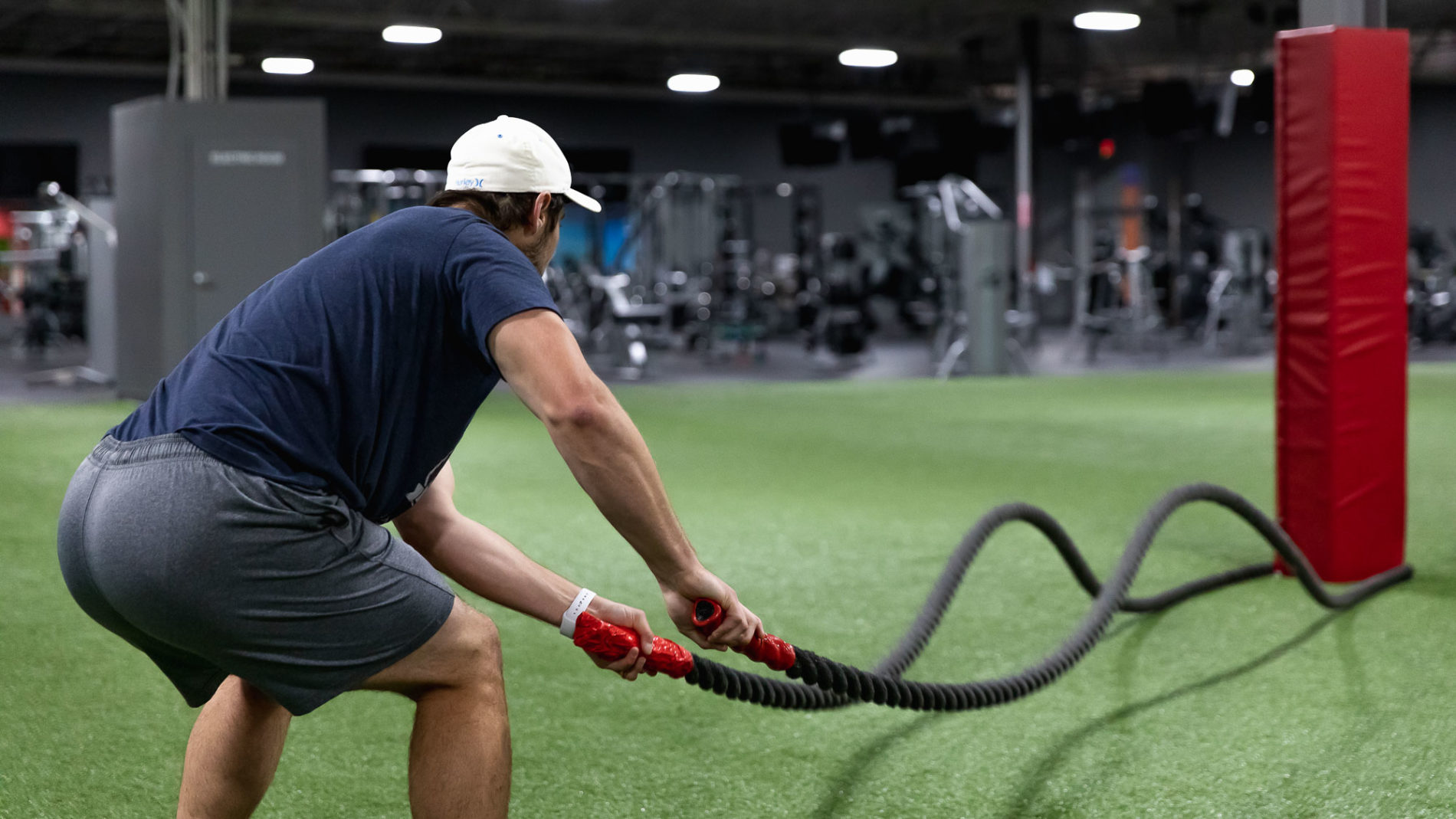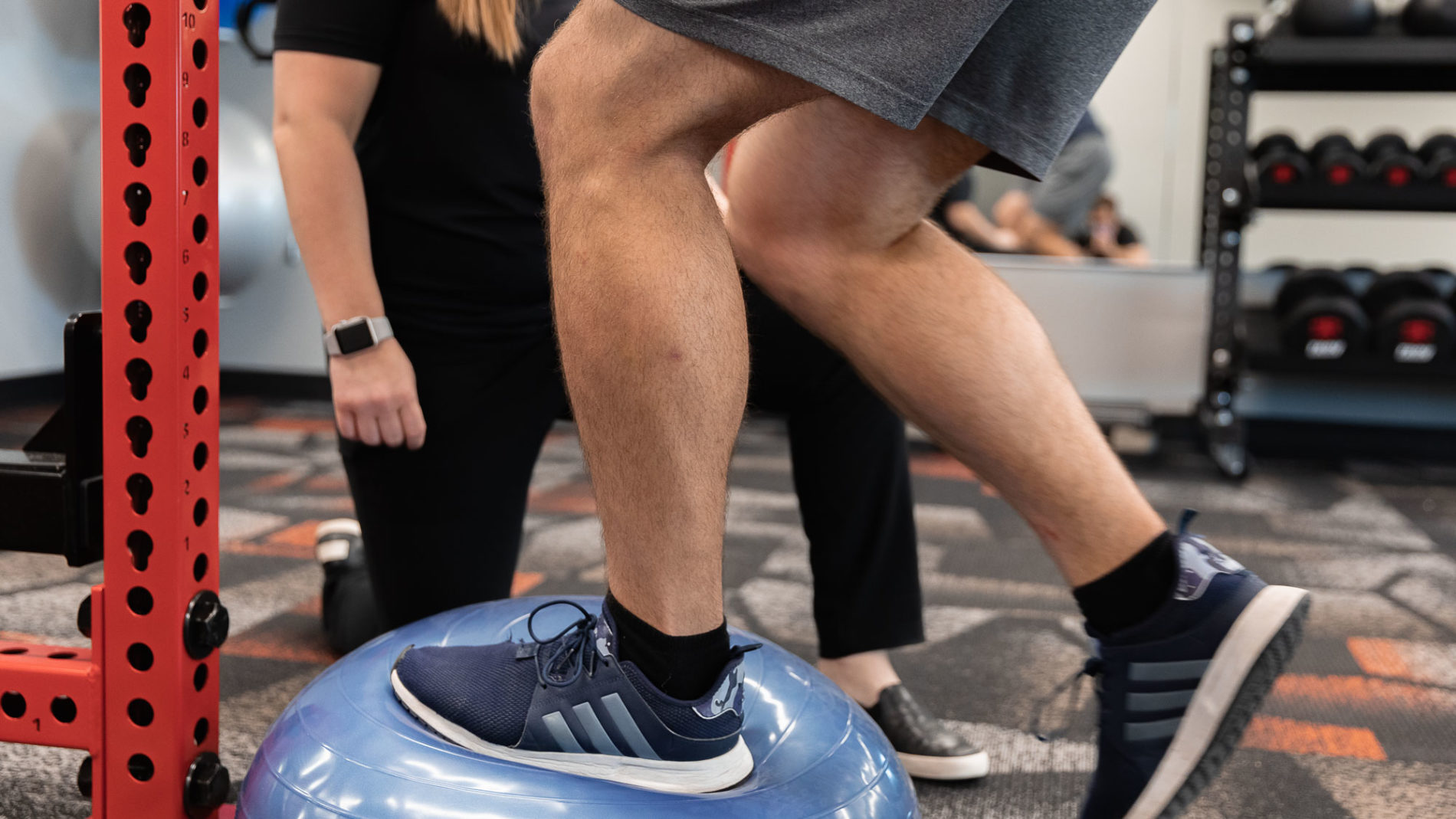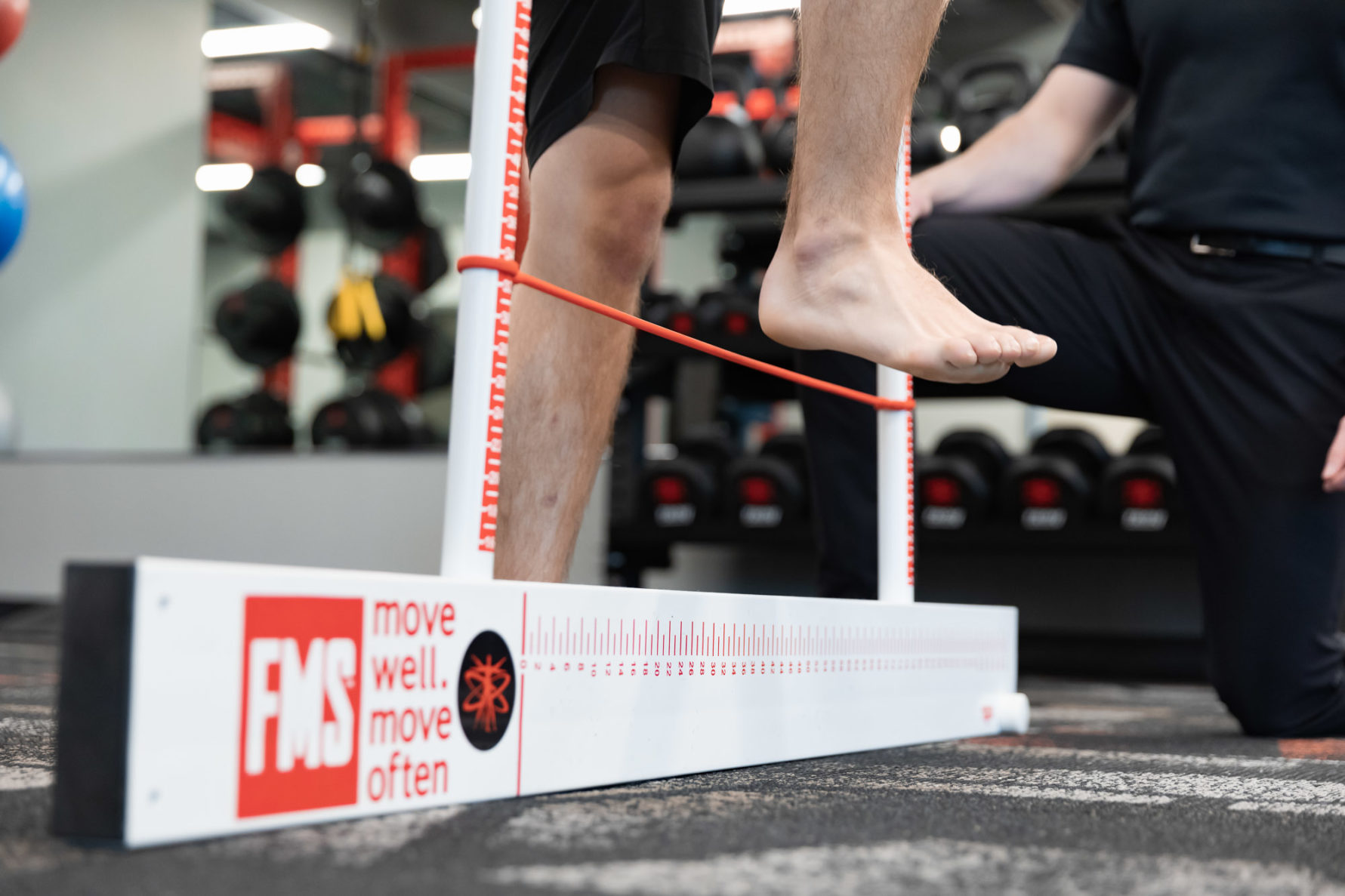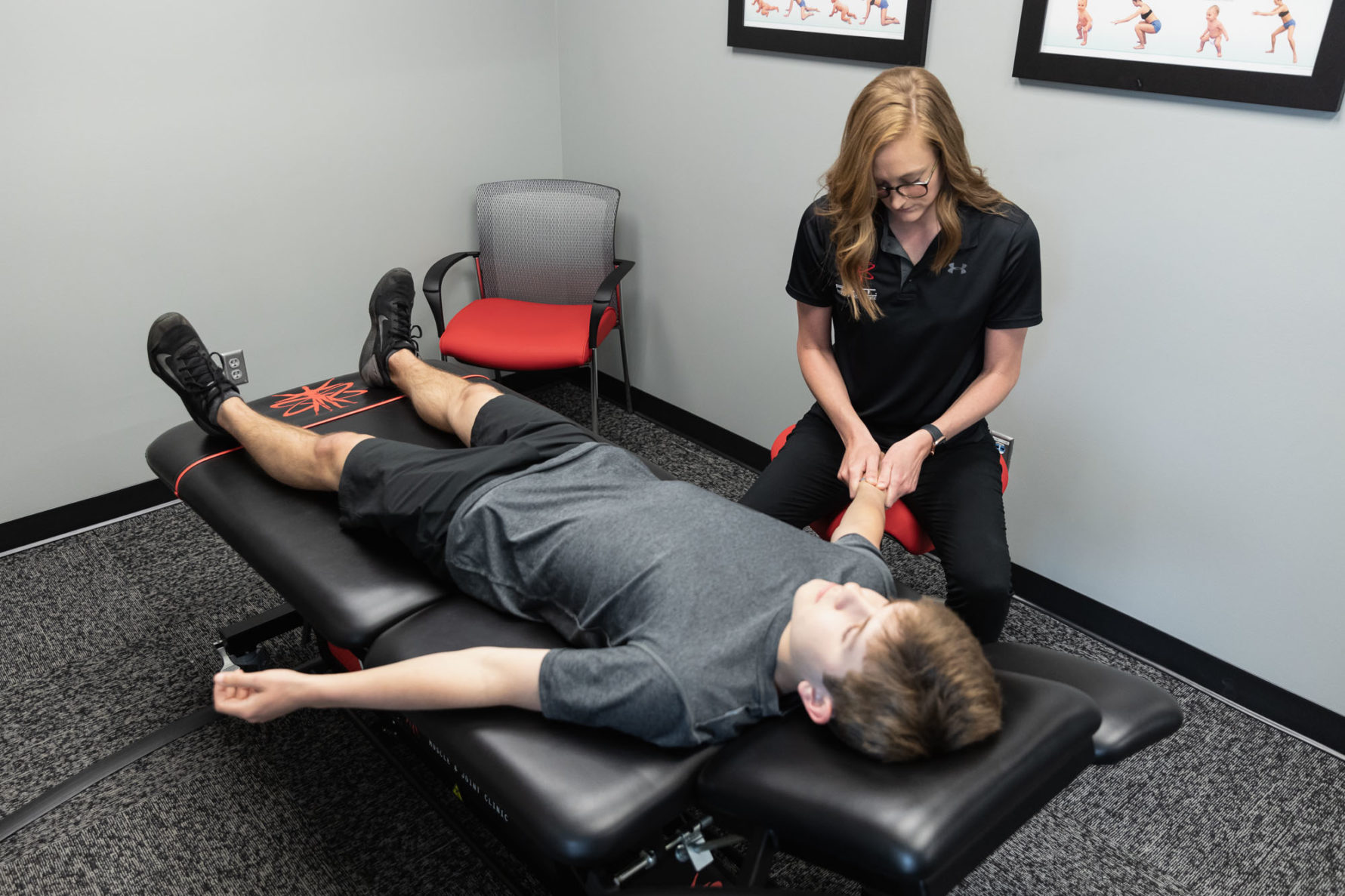
Introduction to Intentional Conditioning – Training All Three Energy Systems
As many Kansas Citians look to get back into the gym and work to establish new training regimens, we're giving a little insight on intentional conditioning and how you might incorporate it into your training!
Did you know our bodies utilizes three different energy systems and therefore requires different training to improve each of these?
What are the three energy systems our bodies utilize?
1) phosphagen system, which is typically used for explosive bouts of activity lasting < 10 seconds (think an all-out sprint, olympic lift, kettle bell swing, etc.)
2) the glycolytic system, which is longer lasting but still capped to around several minutes depending on how trained an individual is in this area (think of a longer sprint)
3) the oxidative/aerobic system, which can essentially last indefinitely, but again can become more efficient through training.
So let's dig into each system and how you can train them to improve fitness and overall efficiency across the three energy systems!
The phosphagen and glycolytic systems are typically best trained in intervals with specific work to rest ratios. The aerobic system can be trained in both intervals and in continuous bouts without rest periods. The systems are also intensity/effort-dependent, which means that if you are pushing past a certain heart rate threshold or perceived exertion rate (such as on the Rate of Perceived Exertion or RPE scale), then it will affect which systems you are utilizing to create the energy you need to perform the specific activity.
An example of this would be if you pedaled a bike at 50-60% level of intensity as dictated by heart rate or an RPE of 5-6/10 (how hard you feel like you are working to perform the task) versus if you went at an intensity of 75%+ or 7+/10 RPE. In the first example, you would likely be able to stay primarily all aerobic in energy system utilization, but in the latter example, you would most likely (almost certainly) be dipping into your glycolytic and possibly phosphagen system for a moment of time to help sustain the activity. The only problem with sustaining higher intensity levels of training for all training sessions is that you will not effectively train your oxidative system. Constantly training at higher intensities without proper recovery can also lead to other multiple side effects that can negatively impact your training including your ability to perform at a high level when needed. These will not be discussed in-depth here, but some of these negative side effects include chronically elevated levels of cortisol (which can lead to joint and connective tissue degradation) persistent muscle soreness, and a decreased ability (and even desire) to perform activities at a higher intensity – meaning essentially you “hit a wall” and keep hitting it, which over time compounds and can actually leave you LESS conditioned overall than if you intelligently program your conditioning regime.
This is a very simple summarization of the three energy systems utilized by our bodies, but it serves to help illustrate the importance of training the systems specifically and the benefits of doing so. This is also particularly important if the sport or activity you participate in involves one system more heavily than another, or if you have a particular area of weakness in your “engine” that you need to target and train.
Not sure where to begin? Here are some sample templates for conditioning sessions.
Note that the “OFF” periods are periods of complete rest, not periods where you are supposed to be doing another type of movement or activity. However, in some of the examples, the “OFF” period will be an “active rest” period if it is indicated, otherwise it is supposed to be entirely a period of resting from the effort you just put in. The “ON” periods are when you are going or actively performing the exercise/movement of choice.
Phosphagen
You typically want to rest anywhere from 2-5 minutes between bouts in order to fully recover this system; however, your level of training will dramatically affect the required amount of rest between efforts (ex: people who are highly trained in all three energy systems can utilize the oxidative system to help the phosphagen system recover more quickly than another individual who isn’t as conditioned)
Workout examples:
- Swing a kettle bell explosively for 10-20 seconds, then rest
- Sprint on a stationary bike, Assault Bike, or Concept 2 Rower for 10-20 seconds, then rest
- Track sprints for distances that last <30 seconds, resting between sprint sets
For these workouts, you want to be nearly or completely recovered before you “go” again, otherwise you are not truly training your phosphagen system and you will start going “glycolytic.” An exception to this again is if you are also training your oxidative system at the same time, or you are highly trained already, or both. Sometimes this will necessitate having a way to monitor your heart rate, however, otherwise you risk “going glycolytic.”
Training template examples:
- 10-20 seconds “ON” then 2 minutes “OFF” x 5 sets total
- 10 seconds “ON” 5 minutes rest x 10 sets total
- 15 seconds “ON” 45 seconds rest x 10 sets total (10 minutes total)
*Note: this would be training your phosphagen system and oxidative because the rest periods are significantly shorter, but you would need to ensure you are conditioned enough so that you feel completely ready to hit your “ON” interval again, otherwise your effort level is too high for your recovery periods. This can be a great way to gradually increase your conditioning, as you can add intervals as you go and increase your total training volume.
Glycolytic
You typically want to complete workouts with a 1:2 work-rest ratio, but again, there can be a lot of variance here depending on your level of conditioning and your desired training stimulus. However, the examples included here adhere to this prescribed work/rest ratio.
Workout examples:
- Rope slams, ball slams, kettle bell swings for set intervals
- Stationary bike sprints, Assault Bike, Concept 2 Rower, or stair sprints for intervals
- Track workouts with set intervals of work/rest
For these workouts, we can introduce the “active recovery” period into the training templates. Ideally you still want to make sure you keep a true 1:2 work-rest ratio in your training sessions to maximize training of your glycolytic system, and you want to ensure your “active recovery” periods do not continue to elevate your heart rate/level of exertion.
Training template examples:
- 20-30 seconds “ON” then 1 minute “OFF”/active recovery x 10 sets total
- 4 x 1:30 “ON” intervals with 3 minutes of rest/active recovery between each go
- 2:00 “ON” then 4:00 “OFF” of active recovery (walking, light jog, light pedaling on bike, etc.) x 5 sets total
Oxidative
For oxidative workouts, it can be very helpful to have a way to monitor your heart rate in order to ensure that you do not achieve a working level of intensity that will force your body to start utilizing more glycolytic-based energy systems. This is not required, as you can also use the RPE scale (which again is based off your perceived level of working intensity), but either way it can help you truly stay “aerobic” in nature, which for many requires working at a much lower training intensity level than one would expect. Note, however, that depending on the level of conditioning, one may be able to work at higher levels of intensity for dictated periods of time, then continue working (without stopping), but at a much lower level of intensity, while still remaining relatively “oxidative” or aerobic overall.
Workout examples:
- Cycling, Assault Bike, Concept 2 Rower for set distance/time/intervals/sustained intensity level
- Running and swimming for set distances/time/intervals/sustained intensity level
For these workouts, we can still include “intervals,” or we can just go for a total set time or distance. The biggest point is that you control your overall max heart rate and sustained average heart rate, and/or your sustained level of RPE without stopping.
Training template examples:
- Train for 30-60+ minutes at an intensity <70-75% max heart rate or <6-7/10 RPE scale
- Train intervals or tempo workouts where you work at a certain HR% for a set period of time, then drop back down to a lower set HR% for a set period of time, alternating throughout the workout (again, staying below roughly 70-75% max heart rate on average)
- 3:00-5:00 minute “ON” intervals at a higher HR% with 3:00-5:00 minute “OFF” intervals of “active recovery” (continuing to move/train but at an intensity level that allows your HR to come back to the desired level)
*Note: Again, how hard you can push things with your “ON” intervals and what this will actually look like in training will vary from individual to individual and is dictated by their conditioning level and sport/hobby. However, as a general guideline, interval training sessions with an aerobic focus can typically be kept to a 1:1 work “rest” ratio – where the resting here is still sustaining physical activity/the training you’re completing.
As you head back to the gym or maybe try out a new training program, don't forget to move safely through each activity!



